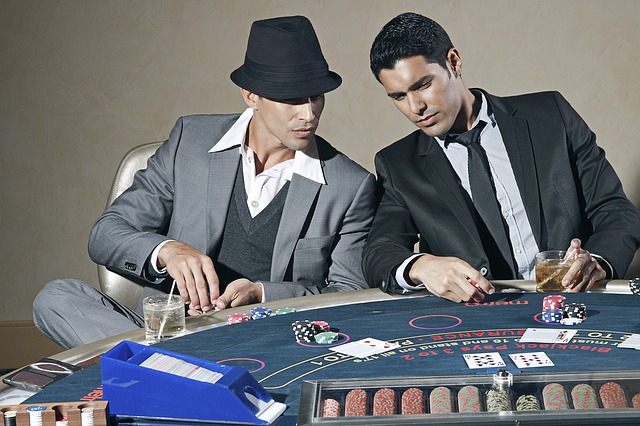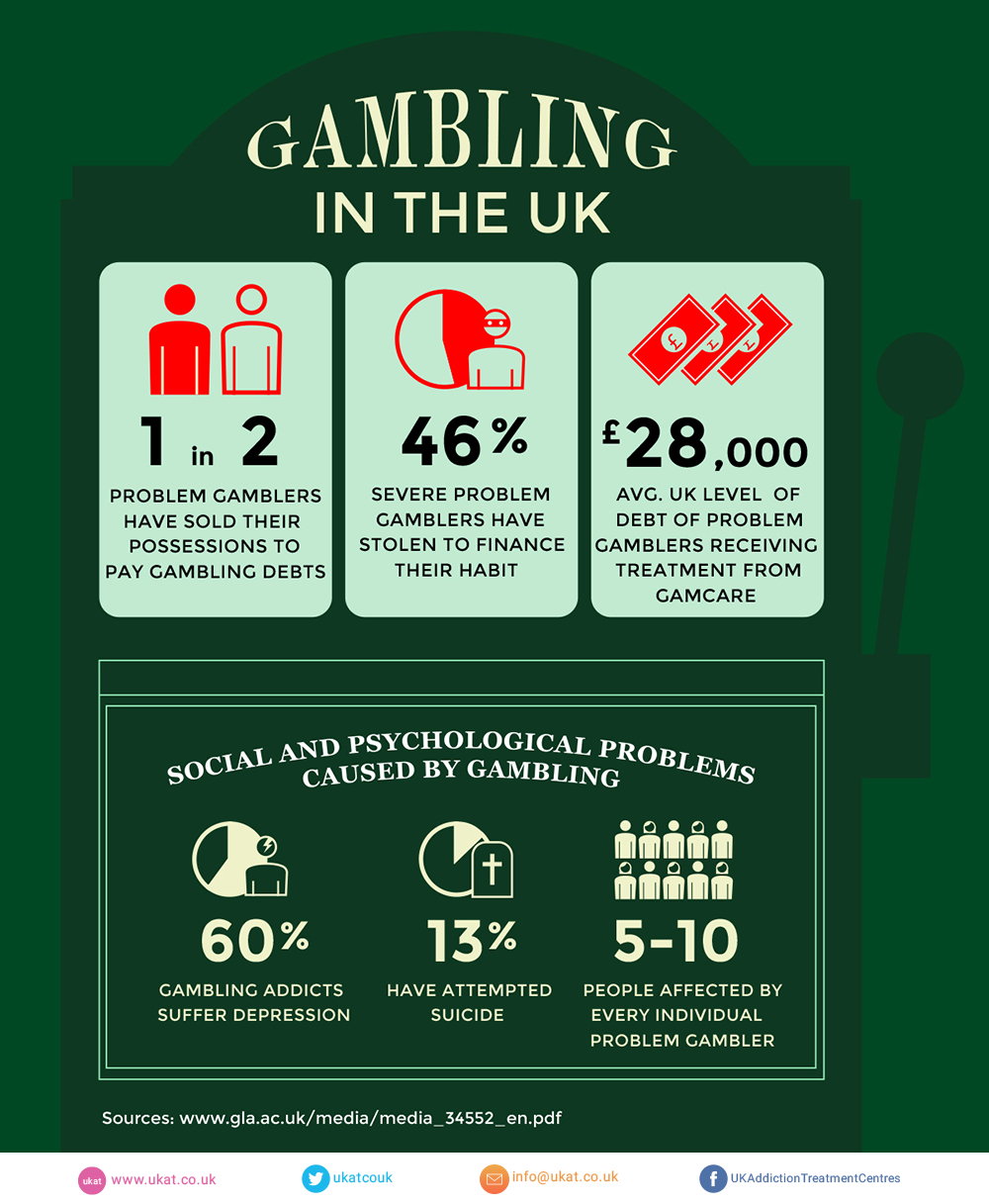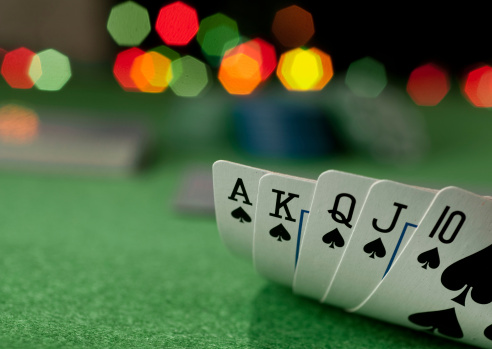Gambling And Depression
- Depression, stress, substance abuse, or anxiety can both trigger gambling problems and be made worse by compulsive gambling. Even when gambling is no longer a part of your life, these problems will still.
- Gambling addiction is a debilitating condition, causing depression and distress. For someone with a gambling addiction, the feeling of gambling is equivalent to taking a drug or having a drink.

Gambling physically alters the brain, making people more prone to anxiety and depression, study finds Gambling physically alters the brain, making people more prone to anxiety and depression, study. Major depression is among the most common comorbid conditions in problem gambling. However, little is known about the effects of comorbid depression on problem gambling.
Published in Springer's Journal of Gambling Studies, it is the first to investigate the extent to which gambling and depression develop hand-in-hand from the teenage years to early adulthood.
Self-Help Exercises for Anxiety to Relieve the Gambling Urge
Gambling problems are related to other underlying issues such as anxiety, stress, and difficulties with impulse control or substance abuse. Easy-to-apply strategies can end the impulse to gamble, as well as avoid slips and relapses.
Gambling and anxiety
Many people gamble as a way of managing anxiety. As they gamble, people often report being separated from their anxious feelings or projecting their feelings of anxiety onto the excitement they feel when they partake in their gambling activity of choice. As a result, gambling can work its way into the fabric of their everyday life, and the impulse to gamble can overwhelm the rest of their lives.
Thus, for many gamblers, reducing anxiety is a prerequisite to making any changes in gambling behavior. Fortunately, there are several techniques that can make a tremendous difference in alleviating anxiety.
Learn to relax
Real relaxation is a physiological and psychological response that is the opposite of anxiety and panic. It’s accompanied by a slowing of the heart rate and lowering of blood pressure, deeper breathing, and a calm, even state of mind. When experienced on a regular basis, its effects are cumulative. One of the most powerful ways that people can counteract anxiety is by learning to relax. It isn’t possible to be relaxed and anxious at the same time. This means more than simply plopping down in front of a television or surfing the Internet, although on the surface, those activities can seem like they’re relaxing.
If the level of anxiety is so high that it makes people physically and psychologically uncomfortable, taking active steps to relax can offer them relief. Relaxation exercises, such as those outlined below, teach people to identify worry triggers, defuse them, and break the cycle of anxiety. It’s best for people to commit to daily practice, even if the exercises don’t appear to help at first, because the more people do these exercises, the more positive effect they will have.
Being able to relax is a skill, and like any other skill someone wants to develop, it gets better with practice. The more people practice, the more they will become aware of the ebb and flow of anxiety. That way, as soon as they feel its presence, they can target it. There are dozens of “mind and body” approaches like yoga, tai chi, and meditation. These practices blend deep breathing and relaxation strategies with body awareness techniques that help people recognize when they are becoming too tense. Many of these are ongoing practices people can try at a health club, a studio, or even at home.
Before people can learn to relax, it is helpful for them to get a handle on what is making them anxious in the first place. Greater awareness can help people anticipate these feelings, which in turn allows them to recognize the need to employ a relaxation strategy. It also helps to understand which relaxation strategies are the most effective. That’s why it may be helpful to keep a journal for at least one week. Individuals can use it to write down what makes them anxious and how they respond to that anxiety. After a week of making journal entries, people can usually identify anxiety triggers and patterns of response.
Then it’s time to identify other ways of responding that might alleviate rather than fuel anxiety. Here are three excellent relaxation exercises to get started.
Practice progressive muscle relaxation
The purpose of this exercise is for someone to learn body awareness and the difference between tense muscles and relaxed muscles. By slowly tensing and relaxing each muscle group in the body, people can teach themselves the difference between a relaxed muscle and a tense one. Once people learn this skill, they will have better body awareness in situations that make them tense. Over time, and with continued practice, they will learn to cope with tension by training their muscles to relax while calming the mind. After all, it is not possible to be tense and relaxed at the same time.
Someone can get started by setting aside 15 uninterrupted minutes in a quiet, distraction-free location. It may help to dim the lights, or to sit or lie down in a comfortable position.
The idea is to hold and squeeze each area of the body for 15 seconds (about 10 slow counts), feeling the tension build up. Then release the tension and completely relax, allowing the tension to flow out of that area and away from the body. For every muscle group, the person doing this exercise should take a moment to notice how different it feels when it’s tensed compared to when it’s relaxed. Repeat the exercise at least once, and as many as three times, before moving on to the next area of the body.
Try the following sequence:

- Hands: Squeeze them into fists and then relax.
- Front of upper arms: Tighten all of the muscles in the front of the upper arm and then release them.
- Back of upper arms: Tighten all of the muscles in the back of the upper arm and then release them.
- Shoulders/neck: Raise both shoulders and tense up the neck before dropping both shoulders and releasing the muscles.
- Forehead: Raise both eyebrows enough to wrinkle the forehead and then lower both eyebrows to relax the forehead.
- Jaw: Clench then release both the upper and lower jaw.
- Cheeks: Make a forced smile, then relax it.
- Abdomen: Tighten the belly and lower back muscles, then relax them.
- Upper legs: Stiffen and straighten the thigh muscles and then relax them.
- Lower legs: Tighten the shin muscles by pointing the toes to the ceiling, then relax the feet and muscles.
- Feet: Curl the toes and tighten the muscles in the bottoms of both feet, then uncurl the toes and relax the muscles.
Breathe deeply

Slowly exhaling gives both the body and brain a signal that helps them to relax. Practicing this type of deep breathing can help people to breathe like this even when they are not actively engaged in this type of exercise.
People should aim to set aside 10 uninterrupted minutes for this exercise, preferably in a quiet, distraction-free location. It may help to dim the lights and to sit or lie down in a comfortable position.
They can start by placing one hand gently on the chest and one hand on the abdomen, just above the belly button. Inhale deeply through the nose or through pursed lips for one slow count. The lower hand will move out as the belly and ribcage expand. (The upper hand should not move at all.) Next, exhale completely through the mouth for one slow count. The bottom hand should move inward as the belly and ribcage grow smaller during exhalation.
Once people learn this technique, they will understand how it feels to breathe evenly and deeply rather than taking the short, choppy breaths that often accompany anxiety and distress.
Try a visualization exercise
Another helpful technique is to combine visualization with deep breathing or progressive muscle relaxation. Visualization can also be used on its own to quell anxiety.
A classic visualization exercise is to imagine a safe, peaceful place or situation, using all five senses to conjure up as much detail about it as possible. This helps draw someone’s attention away from tense negative thoughts and urges.
For example, people could imagine taking a leisurely walk on the beach. With practice, they can actually see the ocean, sun, sand, and birds. They learn to hear the waves crashing against the shore or the seagulls cawing. They can feel the warm sun on their skin and the soft sand beneath their feet. They can smell and taste the salty air.
Find replacement activities
Distraction is better than deprivation. In other words, one of the best ways people can relieve anxiety and minimize urges to gamble is to do something else, an alternative activity that is positive and enjoyable. This focuses attention away from worry, reducing the need for the familiar gambling pattern.
Finding a replacement activity may involve taking up old hobbies or finding new interests and activities. Over time, such new interests evolve into coping mechanisms that help people more effectively manage anxiety and gambling.
Get started by thinking of at least five enjoyable activities that have nothing to do with gambling, drinking, or substance abuse. This might include watching TV, working out, or gardening. The key is to find activities that are truly appealing.
Be patient
As people seek to change their relationship with gambling, they will need to sort out many aspects of their lives, gain new perspectives, and acquire new skills. It is typical that people will make headway and then take a few steps back. It’s important to remember that making any significant change is a bit like going on a long journey. It takes time.
Corticosteroid injections. Used occasionally, corticosteroid injections can relieve pain and inflammation caused by arthritis, sciatica, and other conditions.
Do you know what it’s like to look down at a stack of cards and think, Just one more hand … even though that’s what you told yourself an hour ago?
If so, then you probably already know the truth of John Milton Hay’s observation:
“True luck consists not in holding the best of the cards at the table; luckiest is he who knows just when to rise and go home.”
The problem for people with gambling addiction is that they lose that ability to know when to quit. They’ve lost the “off” switch for their behavior, and they don’t know how to get it back.
What is Gambling Addiction?
Gambling addiction is part of a broader category of behavioral addiction or process addiction. In basic terms, behavioral addiction means that you’re bound to a particular rewarding behavior (such as gambling), and you persist in that behavior regardless of harmful consequences.
Compulsive gambling involves an uncontrollable urge to continue rolling dice and placing bets despite the toll it takes on your life.
Gambling itself can take many different forms, including:
- Purchasing lottery tickets
- Playing card games
- Playing electronic games (such as online slots or poker)
- Playing other casino games such as roulette, dice games, or slot machines
- Placing bets on various sporting events
Many of these behaviors are no problem in moderation, but when they become compulsive, they are major roadblocks to health and happiness.
Types of Gamblers
Gambling Depression Reddit
Furthermore, gambling addiction itself can be subdivided into distinct categories. According to Dr. Robert Custer, there are six distinct types of gamblers:
- Professional gamblers
- Antisocial gamblers
- Casual social gamblers
- Serious social gamblers
- Relief and escape gamblers
- Compulsive gamblers
For the purposes of this article, we’re focusing in on relief and escape gamblers, as well as compulsive gamblers. These are the people who are trying to use gambling to keep a lid on feelings that seem unmanageable.
What Drives Gambling Addiction?
As the co-founder of a non 12-step rehab specializing in dual diagnosis, I work with people with addictive behaviors all of the time. Often our participants come to us with both substance abuse and process addictions; there is significant overlap.
That said, I can also sum up everything I know about addiction in five words: It isn’t about the substances! Instead, it’s about the underlying core issues that drive the drug use.
Gambling And Bipolar Disorder
Underlying core issues include hopelessness, despair, depression, anxiety, trauma, and other mental and emotional concerns that fuel addictive behavior.
From my perspective, the major mental and emotional health issues driving gambling addiction are as follows:
- Depression
- Anxiety
- Low self-esteem
Let’s unpack each one of those in detail, as they’ll give us a road map for recovery.

How to Heal from Gambling Addiction
Depression
What is depression? Depression is anger turned inward.
That’s right: what you think of as stifling hopelessness, ennui, or despair is actually the result of anger turned against yourself.
We begin to work with depression by addressing the anger that precipitates it. One great way to do this is with a technique called “Free Form Writing.”
This is an accessible exercise, one that you can do anywhere that you have about 10 to 15 minutes of privacy. Just grab a pen and paper and begin to write.
If you want a prompt, try this: “I’m angry about …”
Then fill in the blank.
You can say anything you like, just keep your pen moving for at least 10 minutes. Don’t censor yourself or hold back; these words are for you alone.
At the end of the allotted time, don’t pause to reread; instead destroy the paper. Burning it is best, but you can also shred it. You’ll be surprised by how much this straightforward exercise can free you up to feel what you feel.
Anxiety
Anxiety is the ungrounded feeling of your energy bouncing off of the internal walls you’ve set up around your emotions.
When you refuse to feel your hurt and anger, your energy gets blocked, and that ping-pong feeling is what we call anxiety. (Panic is simply amped-up anxiety, an acceleration of the ping-pong!)

As such, we work with anxiety by dismantling those internal walls around your emotions. One great way to do this is to start expressing your “forbidden” feelings.
You can use the free-form writing technique described above, or find a safe person such as a therapist and start to express the off-limits parts of your psyche. This is an opportunity to share deep emotions and to begin healing.
For a more detailed explanation of how depression and anxiety interact and feed into one another, check out our post on anger and addiction.
Low Self-Esteem
Low self-esteem happens when you allow your negative thoughts to run rampant and unchecked through your brain. Life coach Brooke Castillo describes it in these vivid terms:
“If you aren’t aware of the 60,000 thoughts that are going through your head every day, it’s like your brain is a toddler with a knife running through there. There is nothing more frightening for a life than an unsupervised mind.”
Unless you set the intention to do otherwise, you will experience thousands of negative thoughts each day. But there is a way out!
To work with low-self esteem, you can use affirmations. These positive thoughts retrain your brain, giving you a chance to rewire your automatic negative thought patterns.
Check out The Power of Positive Affirmations for more detailed instructions on how to get started!
Conclusion: Put the Pieces Back Together
Mental Health And Gambling Addiction
In the words of writer Hunter S. Thompson, “Gambling can turn into a dangerous two-way street when you least expect it. Weird things happen suddenly, and your life can go all to pieces.”
Depression And Gambling Addiction
The good news is that when you know how to heal your underlying core issues, you can pick up those pieces and build a new – and better – life for yourself.